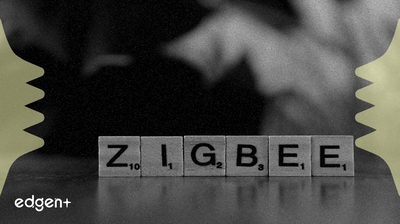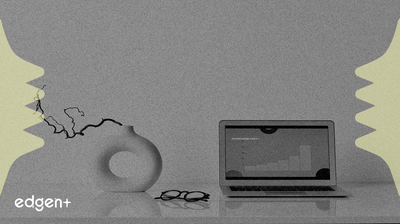Related News

Aave Labs' Push Service Secures MiCA Authorization for Zero-Fee Stablecoin On-Ramps
## Executive Summary Aave Labs' subsidiary, Push Virtual Assets Ireland Limited, secured MiCAR authorization from the Central Bank of Ireland, enabling regulated, zero-fee stablecoin on-ramps for **GHO** and other stablecoins across the European Economic Area, positioning Aave as a regulatory leader. ## The Event in Detail Aave Labs, through its subsidiary Push Virtual Assets Ireland Limited, has obtained Markets in Crypto-Assets Regulation (**MiCAR**) authorization from the Central Bank of Ireland. This approval allows the **Push** service to provide regulated stablecoin on and off-ramping capabilities within the European Economic Area (**EEA**). The service facilitates zero-fee conversions between euros and crypto assets, including Aave's native stablecoin, **GHO**, and other integrated stablecoins. This development marks Aave Labs as one of the first decentralized finance (**DeFi**) projects to operate under Europe's new regulatory framework. Ireland has been strategically chosen as the operational hub, signaling its emergence as a preferred jurisdiction for compliant onchain finance under MiCA. ## Deconstruction of Financial Mechanics The core financial mechanism of the **Push** service is its offering of zero-fee stablecoin on and off-ramps. This provides a competitive rate when compared to the typical fee structures prevalent across legacy fintech providers and centralized exchanges (**CEXs**). While the announcement details this as a zero-fee solution, the permanence of this fee structure or its potential as an introductory offer was not specified. This fee-free model aims to lower the barrier to entry for users transitioning between traditional fiat currencies and digital assets, specifically euros and stablecoins, under a new standard for consumer protection and transparency. ## Business Strategy and Market Positioning Aave Labs' strategy centers on pioneering regulatory compliance within the DeFi sector. By securing **MiCAR** authorization, **Aave Labs** has positioned itself as one of the first major DeFi projects to establish a regulated pathway for stablecoin transactions in Europe. This move aligns with the increasing mainstream traction of stablecoins and tokenized digital assets, with the global stablecoin supply projected to exceed $300 billion by 2025 and currently standing at $312 billion according to CoinGecko data. The choice of Ireland for its European operations underscores a deliberate effort to build compliant and transparent connections between users and DeFi. This approach differentiates Aave by prioritizing consumer protection and regulatory adherence, potentially setting a precedent for other DeFi protocols seeking to expand into regulated markets. ## Market Implications The **MiCAR** authorization for **Aave Labs' Push** service carries significant implications for the broader Web3 ecosystem and corporate adoption trends. By offering regulated, zero-fee stablecoin on-ramps, **Aave** is lowering the friction for mainstream users to engage with DeFi. This enhances user confidence by operating under a framework designed for consumer protection and transparency. The development is expected to increase the adoption and utility of **Aave's GHO** stablecoin and contribute to the overall growth of the DeFi sector within the **EEA**. This regulatory clarity provided by MiCA and early adoption by projects like Aave Labs could accelerate institutional interest and foster a more predictable operating environment, ultimately helping DeFi transition from a niche innovation to a more mainstream financial component. The competitive zero-fee structure could also pressure other financial services providers to adapt their pricing models for digital asset conversions.

Uniswap Launches Continuous Clearing Auctions, Aztec Network Utilizes Protocol for Token Sale
## Executive Summary Uniswap Labs has introduced the **Continuous Clearing Auction (CCA)** protocol, a new mechanism designed to establish fair market prices for new tokens with low liquidity and automatically create liquidity pools within **Uniswap v4**. The **Aztec Network** will be the first project to leverage CCA for its token sale, marking a significant step in decentralized finance (DeFi) issuance and liquidity bootstrapping. ## The Event in Detail Uniswap's CCA protocol is a permissionless tool enabling projects to launch tokens and establish liquidity on **Uniswap v4**. The protocol operates entirely on-chain, emphasizing transparency, gradual price discovery, and automated liquidity injection. Projects utilizing CCA define the amount of tokens for sale, a starting price, and the auction's duration. Participants place bids by specifying maximum prices and total spend, with these bids automatically distributed across auction blocks. At the conclusion of each block, a market-clearing price is determined, ensuring all tokens allocated for that block are sold at a uniform price. This design incentivizes early bidding, as bids placed earlier in the auction may benefit from lower average prices. **Aztec Network**, a privacy-focused Layer 2 network on **Ethereum** with over $8 million in Total Value Locked (TVL), is the first to implement CCA for its token sale. Registration for the Aztec token sale opened on Thursday, with public bidding scheduled from December 2 to December 6, 2025. The auction commences with a fully diluted valuation (FDV) of $350 million, representing an approximate 75% discount from Aztec Labs' most recent equity financings. To ensure broad community participation and prevent large holders from dominating the sale, per-user participation limits have been set. Aztec's sale will also integrate **zero-knowledge proofs** via ZkPassport's Noir circuits for compliant sanctions checks without compromising user privacy. ## Market Implications The introduction of CCA by Uniswap is poised to significantly impact the DeFi ecosystem's approach to token issuance and liquidity management. By providing an on-chain, transparent, and fair framework, CCA addresses structural issues inherent in traditional token launch mechanisms, such as airdrops, Dutch auctions, and fixed-price sales. The protocol's ability to automate liquidity seeding into **Uniswap v4** pools immediately post-auction is expected to mitigate initial price volatility and reduce information asymmetry. This mechanism fosters competitive price discovery while enhancing confidentiality of intents through technologies like **Multi-Party Computation (MPC)**, **Fully Homomorphic Encryption (FHE)**, and **Trusted Execution Environments (TEE)**. These features aim to reduce risks associated with frontrunning and centralization, while maintaining the rapid settlement times crucial for DeFi operations. The per-user participation caps implemented in the Aztec sale further exemplify CCA's potential to democratize access to new token offerings, moving away from models that often disadvantage retail participants. ## Broader Context CCA expands Uniswap's issuance infrastructure, with additional modules planned for future release to further enhance the launch experience for projects and participating communities. This initiative positions CCA as a potential standard for DeFi issuance, promoting a more transparent and equitable market for new tokens. The protocol aligns with a broader trend in the Web3 space towards challenging opaque crypto norms through fully on-chain transparency and real-time audibility, as seen in projects aiming for fair token distribution without private allocations or venture capital deals. The collaboration between Uniswap and Aztec underscores a commitment to non-custodial, permissionless DeFi that is transparent, fair, and immutable.

Asia-Pacific Leads Global Digital Asset Adoption with Nearly 25% Adult Penetration
## Executive Summary The Asia-Pacific (APAC) region has emerged as a leading hub for digital asset adoption, with nearly one in four adults, or 24.3%, utilizing cryptocurrencies. This figure significantly surpasses the global average of 16.9% and positions APAC as the fastest-growing driver of crypto activity in 2025. The region accounts for approximately six in ten of the world's digital asset users, driven by factors such as remittances, mobile-first finance, and stablecoin transactions. Awareness of cryptocurrency is high, with over 90% of adults in the region reporting familiarity, and more than half expressing intent to use digital assets within the next year. ## The Event in Detail Findings from the "APAC Digital Asset Adoption 2025: Stablecoins, Tokenization & Integration" report indicate that 24.3% of adults with internet access across the Asia-Pacific region use digital assets. This is considerably higher than the global average. Stablecoins have been particularly influential, with almost one in five adults across the region utilizing them. A notable disparity exists between emerging and developed APAC economies: stablecoin adoption in emerging markets stands at 17.8%, roughly three times that of developed economies, which record 5.8%. Countries like Thailand lead stablecoin adoption at 30%, followed by the UAE at 26%, and Hong Kong at 18%. Japan, in contrast, shows the lowest adoption rate in the study at 2%. The report underscores a shift in digital asset usage from speculative investment to embedded financial infrastructure, particularly through remittances. The APAC region has also seen its trading volume increase by 69% year-over-year, rising from $1.4 trillion in June 2024 to $2.36 trillion in June 2025, with countries such as Vietnam, Pakistan, India, and South Korea contributing significantly to this growth. ## Market Implications The accelerated integration of digital assets into mainstream finance is a dominant theme in 2025, propelled by institutional adoption and regulatory clarity. The approval of spot **Bitcoin** (**BTC**) ETFs in early 2024 and **Ether** (**ETH**) ETFs in July 2024 has opened avenues for substantial institutional capital. Similar approvals are anticipated for other single-token cryptocurrencies like **Solana** (**SOL**) and **XRP** (**XRP**). This trend, coupled with maturing infrastructure and an expanding array of practical use cases, is fostering increased crypto adoption across both institutional and consumer segments. Globally, regulatory advancements such as the EU's Markets in Crypto-Assets Regulation (MiCAR), fully operational since January 2025, and the U.S. GENIUS Act, signed in July 2025, are reducing regulatory uncertainty and attracting more participants. In Asia, key jurisdictions including Singapore, Hong Kong, South Korea, and Japan are actively refining their regulatory frameworks. Hong Kong's ASPIRe roadmap, South Korea's Digital Asset Basic Act, and Singapore's Financial Services and Markets Act (FSMA) exemplify this regional commitment to legal and supervisory models supporting long-term market integration. Tokenized real-world assets (RWAs) now exceed $22.5 billion on-chain, and institutional **Bitcoin** holdings have nearly doubled in 2025. ## Expert Commentary Despite the rapid growth, challenges such as scalability, interoperability, and user-friendliness persist, though continuous innovation is actively addressing these hurdles. A J.P. Morgan survey of CFOs and treasurers in Asia Pacific revealed that 40% cite regulatory uncertainty as the main barrier to digital currency adoption. Furthermore, 60% of respondents rated their understanding of digital currencies as low or very low, highlighting a significant need for greater education and clarity in this evolving space. ## Broader Context Asia's rapid growth in crypto adoption, outpacing regions such as the United States and Europe, signifies a pivotal shift in the global digital asset landscape. Stablecoins have gone mainstream, with adjusted transaction volumes approaching $1.25 trillion monthly by September 2025, rivaling traditional payment systems. The repeal of SEC Staff Accounting Bulletin 121 (SAB 121) in the U.S. and its replacement with SAB 122 has removed a major hurdle for institutional custody services by eliminating the requirement for banks to classify crypto assets as liabilities. This regulatory environment, combined with sustained institutional interest and clear policy frameworks, reinforces the transition of cryptocurrencies from a volatile outlier to a strategic asset class, particularly evident in the dynamic APAC market.
